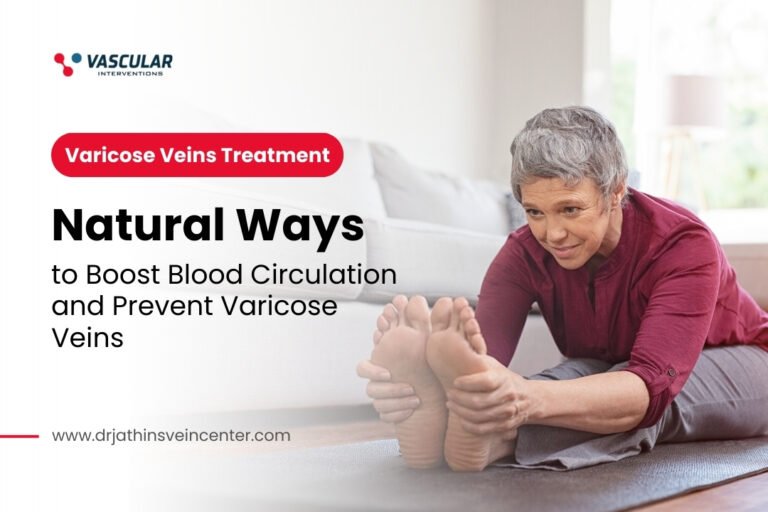Deep Vein Thrombosis, commonly known as DVT, is a potentially life-threatening condition that can occur when a blood clot forms in a deep vein, typically in the legs. If left undiagnosed and untreated, DVT can lead to complications such as pulmonary embolism, chronic vein damage, and even death. Early detection and prompt treatment are essential in preventing these serious outcomes.
This blog post will discuss the importance of early detection and treatment of DVT. We will delve into the causes and symptoms of DVT while exploring the different diagnostic tools used for a timely diagnosis. Additionally, we will review the various treatment options available and how early intervention can significantly reduce the likelihood of complications.
Educating the public about the dangers of DVT and raising awareness about the importance of early detection and treatment is essential. Understanding the risk factors associated with DVT and taking preventive measures such as regular exercise, eating a nutritious diet, and maintaining a healthy lifestyle can significantly reduce their risk of developing this potentially life-threatening condition.
1. Understanding the symptoms of DVT
Deep vein thrombosis (DVT) is a serious medical condition that can cause significant harm if not detected and treated promptly. It occurs when a blood clot forms in a deep vein, usually in the leg, but can happen in other body parts.
Understanding the symptoms of DVT is crucial to early detection and treatment. The most common symptom is swelling of the affected leg, but other symptoms include pain, tenderness, warmth, and redness in the affected area. Sometimes, there may be no symptoms, making early detection more challenging. It is essential to seek medical attention immediately if you experience any of these symptoms, especially if you have had surgery recently, are immobile for long periods, or have a history of DVT or blood clotting disorders. Early detection and treatment of DVT can prevent serious complications such as pulmonary embolism, which can be fatal.
2. Benefits of early detection and treatment
Early detection and treatment of Deep Vein Thrombosis (DVT) are essential to prevent long-term complications and improve the chances of a favorable outcome. When diagnosed promptly, the risk of serious complications such as pulmonary embolism can be drastically reduced. Additionally, early treatment can help mitigate symptoms such as pain, swelling, and discomfort, allowing patients to resume their normal activities sooner.
Early detection and treatment can also help prevent the development of post-thrombotic syndrome, a condition that can be disabling and can significantly impact a patient’s quality of life. In addition, early detection and treatment can potentially reduce the duration and cost of hospitalization, allowing patients to return to normal routines quicker. Therefore, investing in early detection programs and ensuring timely treatment can significantly improve outcomes and reduce the burden of DVT on individuals, healthcare systems, and society.
3. Potential complications of untreated DVT
Untreated deep vein thrombosis (DVT) can lead to serious health complications, so early detection and treatment are crucial. One potential complication of DVT is pulmonary embolism (PE), which occurs when the blood clot from the DVT breaks off and travels to the lungs. This can result in difficulty breathing, chest pain, and even death.
Another possible complication is post-thrombotic syndrome (PTS), which occurs when the veins in the affected area become damaged, and the blood flow is restricted. This can result in chronic pain, swelling, and skin damage.
Lastly, DVT can also lead to venous ulcers and open sores on the skin over the affected area. Overall, the potential complications of untreated DVT highlight the importance of early detection and immediate treatment to prevent serious health issues from developing.
4. How to reduce the risk of developing DVT
Deep Vein Thrombosis (DVT) is a serious medical condition that can be life-threatening if left untreated. One of the ways to reduce the risk of developing DVT is by making some lifestyle changes and taking preventive measures. Here are some practical tips to help reduce the risk of developing DVT:
1. Stay active- Regular physical activity helps to improve blood circulation and lower the risk of developing blood clots.
2. Maintain a healthy weight- Being overweight or obese puts additional strain on the veins, which can lead to the formation of blood clots.
3. Drink plenty of water- Staying hydrated helps ensure the blood flow is smooth, and the blood doesn’t thicken.
4. Avoid sitting for long periods- Whether you’re traveling or working at a desk, try to stand up and move around every 30 minutes. If you’re traveling on a long-haul journey, take a break every few hours and stretch your legs.
Following these simple measures can significantly reduce the risk of developing DVT. If you are at higher risk of DVT or experiencing any symptoms, such as leg pain, swelling or redness, consult your healthcare provider immediately for early detection and treatment.
5. Treatment options for DVT
Deep Vein Thrombosis (DVT) is a serious medical condition that can lead to life-threatening complications if left untreated. Fortunately, there are various options for Deep Vein Thrombosis (DVT) treatments. These options include anticoagulant (blood-thinning) medications, thrombolytic (clot-busting) therapy, and mechanical compression devices.
Additionally, several surgical options, such as venous stenting, angioplasty, and thrombectomy, can be used to treat DVT in severe cases. When considering treatment options for DVT, it is important to consult a healthcare provider to determine the best course of action based on individual patient needs and any accompanying health conditions. Early detection and access to appropriate treatment can help prevent long-term complications and improve outcomes for DVT patients.
Conclusion
Early detection and treatment of Deep Vein Thrombosis (DVT) is critical as it can prevent serious complications and even save lives. It is important to be aware of DVT’s risk factors and symptoms and seek prompt medical attention if you suspect that you may have it.
Remember, prevention is always better than treatment, and a healthy lifestyle, regular exercise, and avoiding sedentary habits can go a long way in reducing the risk of developing DVT.





